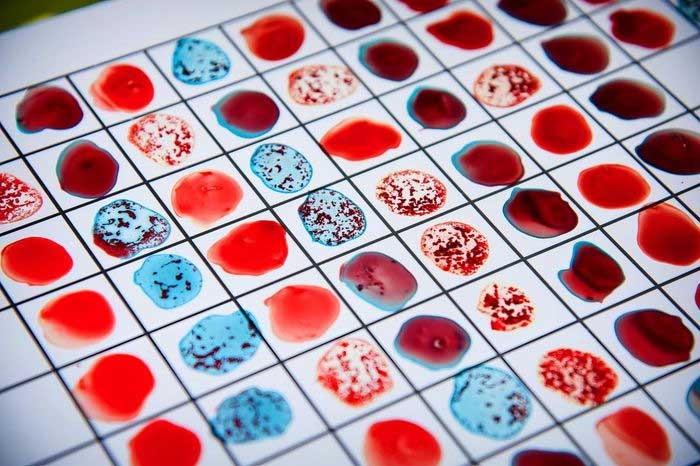When discussing blood types from an anthropological perspective, it is essential to clearly differentiate between two historical classification methods: molecular (gene-based) and epidemiological (population-based).
Molecular history tells the story of the ABO gene type – the gene that determines an individual’s blood type – and this history is quite ancient. In fact, the history of the ABO gene extends far beyond humanity, even though modern humans (Homo sapiens) are the only species known to express all four ABO blood types.

Blood test chart. (Photo: Stanford Blood Center).
This is not surprising, as the chemical components that constitute the ABO blood type are quite common. They can be found everywhere, from invertebrates to the floating duckweed in ponds.
However, one important point must be noted. Genes are not immutable; furthermore, we are beginning to understand that they can change functions more rapidly and significantly than previously thought. If you alter your habits or diet, your body will “turn on” or “turn off” certain genes to adapt to these changes, and sometimes these alterations will be passed down to your descendants. This phenomenon is known as epigenetics.
We should not misunderstand that just because two species share the same ABO gene type, the ABO gene will function identically across both species. For example, in some pig species, blood type O is associated with black fur. Clearly, not all individuals with blood type O have black hair. This is because different species link blood type O with various genes, a phenomenon known as gene linkage. Thus, instead of hair color, humans associate many digestive functions with ABO blood types.
From a molecular perspective, the story is slightly different. While we could say that blood type O has the oldest history epidemiologically, in molecular terms, blood type A appears to be the oldest, as the mutation of blood type A gave rise to blood types O and B. Geneticists refer to this as the wild type gene or ancestral gene.
The components of DNA consist of four nucleotide bases – adenine, cytosine, guanine, and thymine, commonly referred to by their first letters: A, C, G, and T. The mutation in blood type B is simply a replacement of one of these letters in the ABO gene with another nucleotide; geneticists call this single nucleotide polymorphism (SNP).
The mutation for blood type O is even more intriguing. It results from the complete loss of one letter in the DNA of ABO, similar to a train losing one car, causing all remaining cars to be pushed forward. This type of mutation is known as a frame shift mutation, and perhaps the most remarkable aspect is that most frame shift mutations in the genomes we know of have a high mortality rate. Therefore, if you belong to blood type O, this mutation has created you.
Although blood type A is the molecular predecessor, it seems to have disappeared from humans long ago and then “re-emerged” about 300,000 years ago.


















































